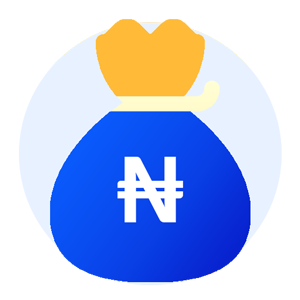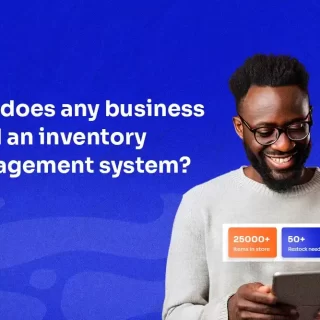
How to make the most money from your customers (leveraging your CLTV)
It’s interesting to make a sale from a customer, but have you thought about how much that customer can make for your business? Only a few to no businesses out of every ten businesses ever maximize the full value of one customer. This is the reason you need to especially understand your customer’s lifetime value (CLTV).
Note: I will be using the term CLTV multiple times within this article it simply means your customer’s lifetime value.
Customer Lifetime Value (CLTV) in simple terms.
A lot of people out there have complicated definitions for what your customer’s lifetime value is, but I love to keep it simple, so here’s an easily understandable definition of your CLTV, it simply means what an average customer is worth to your business over a lifetime.
The importance of properly utilizing your CLTV cannot be over-emphasized it helps you properly maximize one customer value over a lifetime and that’s such a big deal to building a long-lasting business.
Note: I will be using the term CLTV multiple times within this article it simply means your customer’s lifetime value.
Key Components of CLTV:
Understanding Customer Lifetime Value (CLTV) requires breaking down its key components: Average Purchase Value (APV), Average Purchase Frequency (APF), and Customer Lifespan.
Let’s look at each part to see how they contribute to this critical metric.
Average Purchase Value (APV):
Let’s break down the Average Purchase Value (APV) component of CLTV in simpler terms.
Imagine you own a boutique that earns ₦500,000 in a month from 500 transactions. To find your APV, divide the total revenue by the number of transactions.
So, ₦500,000 (total revenue) ÷ 500 (number of transactions) = ₦1,000 per transaction.
Therefore, in this scenario, the Average Purchase Value (APV) for each transaction at your boutique is ₦1,000.
Average Purchase Frequency (APF):
Consider a scenario where a loyal customer makes purchases from your boutique 20 times a year. To calculate APF, divide the total number of transactions by the number of unique customers.
For example, if the customer made 20 transactions in a year, the APF would be 20 transactions per year.
Customer Lifespan:
Suppose your boutique retains customers for an average of 3 years. Calculate the average number of years a customer stays engaged with your business to determine the customer lifespan.
For instance, if you have customers who stay engaged for 2, 4, and 3 years, the average lifespan would be (2 years + 4 years + 3 years) ÷ 3 customers = 3 years.
Calculating CLTV:
To calculate your CLTV simply use this formula: CLTV = APV x APF x Customer Lifespan.
However, we made it easier by creating a custom calculator that helps you do that quickly. The calculator creates individual customer lifetime value and aggregates the number for your total customer base.
Customer Lifetime Value (CLTV) Calculator (₦)
Benefits of CLTV:
To maximize your Customer Lifetime Value (CLTV), it’s crucial to implement effective strategies that enhance customer relationships and drive revenue growth. Here are key strategies simplified for practical application:
Customer Segmentation:
- What is it? Divide customers into groups based on shared characteristics like demographics or purchase behaviors.
- Why it matters: Allows tailored marketing and service approaches for different customer segments, improving engagement and loyalty.
- Actionable Tip: Use customer data to create segments and personalize marketing messages, promotions, and product offerings.
Retention Initiatives:
- What are they? Programs and efforts focused on retaining existing customers and fostering long-term satisfaction.
- Why they matter: Repeat customers typically spend more over time, contributing significantly to CLTV.
- Actionable Tip: Offer loyalty rewards, exclusive discounts, and proactive customer support to encourage repeat purchases and loyalty.
Upselling and Cross-selling:
- What are they? Techniques to encourage customers to buy additional or complementary products or services.
- Why they matter: Increases the average value of transactions and overall CLTV by maximizing each customer interaction.
- Actionable Tip: Recommend related or upgraded products during the purchase process, bundle items for savings, and highlight upgrade options.
Data-Driven Decisions:
- What are they? Making business decisions based on insights derived from customer data, behavior analysis, and market trends.
- Why they matter: Enables businesses to identify opportunities, predict customer needs, and optimize marketing efforts for higher CLTV.
- Actionable Tip: Utilize analytics tools to track customer interactions, measure campaign performance, and adjust strategies based on data insights.
By adopting these simplified strategies, businesses can not only increase CLTV but also build stronger customer relationships and drive sustainable revenue growth over time. Consistent application and adaptation to customer needs are key to success in maximizing CLTV effectively.
Strategies for Maximizing CLTV:
Understanding your CLTV (Customer Lifetime Value) is like having a superpower for your business. Here’s how it helps:
1. Better Customer Segmentation: CLTV helps you group customers based on their value to your business. This allows you to tailor marketing campaigns and services to different customer segments more effectively.
2. Targeted Marketing: With CLTV insights, you can target high-value customers with special promotions or loyalty programs while adjusting marketing strategies for lower-value segments. This targeted approach improves customer engagement and ROI.
3. Enhanced Profitability: By focusing efforts on high CLTV customers, you optimize resources and maximize revenue potential. This leads to improved profitability and sustainable business growth over time.
Real-world Impact: Case studies highlight businesses that used CLTV data to identify VIP customers, personalize experiences, and increase overall customer satisfaction and loyalty. These success stories demonstrate the practical impact of CLTV-driven strategies on business outcomes.
In essence, CLTV empowers businesses to work smarter, not harder, by prioritizing efforts where they matter most and driving profitability through strategic customer management.














